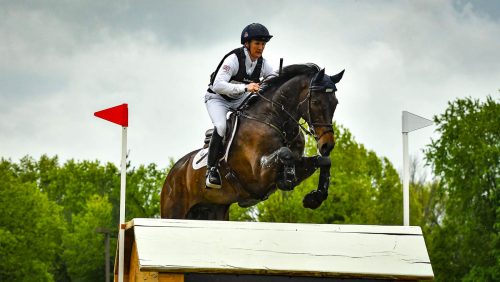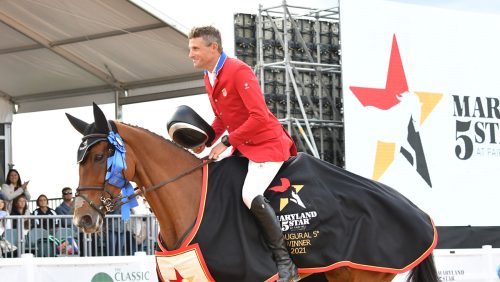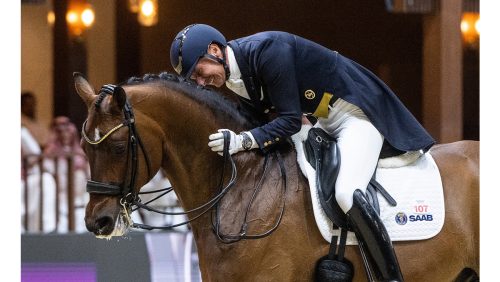In this series, the Chronicle follows six riders as they seek to fulfill their Olympic dreams in Rio de Janeiro in 2016. We’ll check in with them every few weeks as they pursue a team spot, seeing how they’re getting their horses ready and preparing mentally.
No stranger to top international competition, Phillip Dutton has been a mainstay on U.S. teams since he became a naturalized U.S. citizen in 2006. Originally from Australia, Dutton earned a pair of Olympic team gold medals for that country in 1996 (Atlanta) and 2000 (Sydney) before he began competing for the stars and stripes. Since the switch, Dutton has earned himself two more gold medals at the Pan American Games in 2007 (Rio de Janeiro), where he was also the individual silver medalist, and 2015 (Toronto).
Dutton has no less than five horses who could qualify for a spot on the team with him: Mighty Nice, Fernhill Fugitive, Fernhill Cubalawn, Mr. Candyman and Indian Mill. With the Olympic Games still months away, Dutton isn’t too fixated on the rings just yet. Together with barn manager Emma Ford he’s first focused on ensuring his top mounts have a good spring showing as he prepares Mighty Nice, Fernhill Fugitive and Fernhill Cubalawn for the Rolex Kentucky CCI**** at the end of April.
Dutton: [Mighty Nice] had a pretty easy spring with the idea that we will keep building up to Rolex. If he does well there then he’ll have to stay in work right on through, so I purposefully didn’t start competing him too early, but he’s gone really well. I’m particularly pleased with the way he’s going, in all three phases.
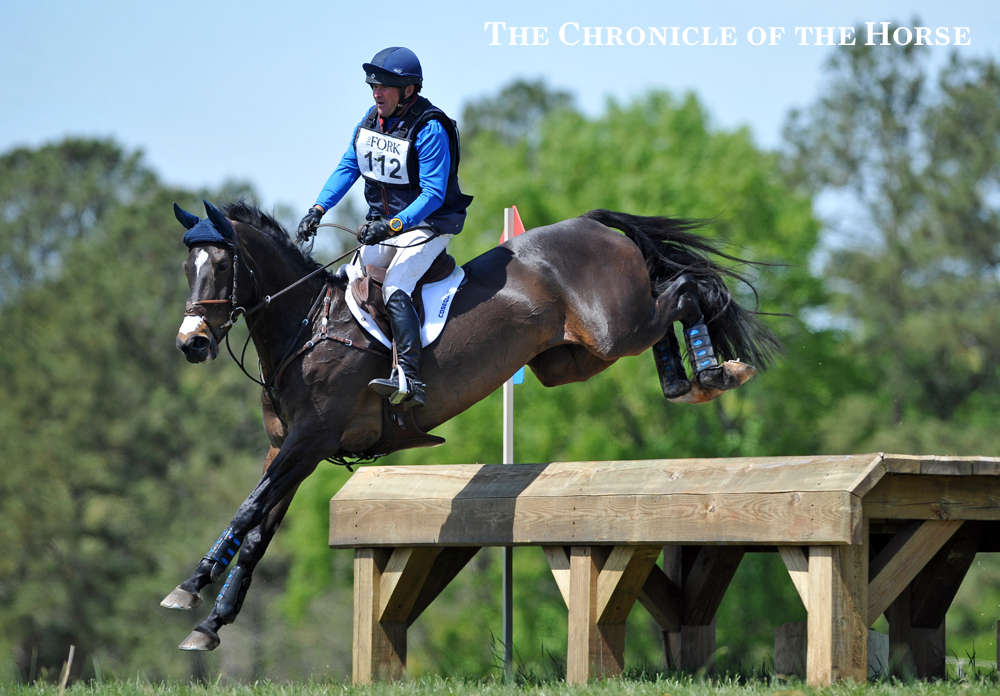
Phillip Dutton and Mighty Nice competing at the Carolina CIC***. Photo by Lindsay Berreth
We spent a lot of time on the show jumping this winter so hopefully that’s helping. He’s finished competing now until Kentucky. We’ve been taking both [Fernhill] Cubalawn and Mighty Nice to jumper shows and putting a bit more emphasis on their show jumping.
Fernhill Fugitive is pretty lazy and laidback so actually [dressage rider] Silva Martin, Boyd’s wife, has spent a lot of time with him. When he has a bit of down time between competing and not galloping Silva has been riding him on the flat for me, and that’s helped a lot on his dressage.
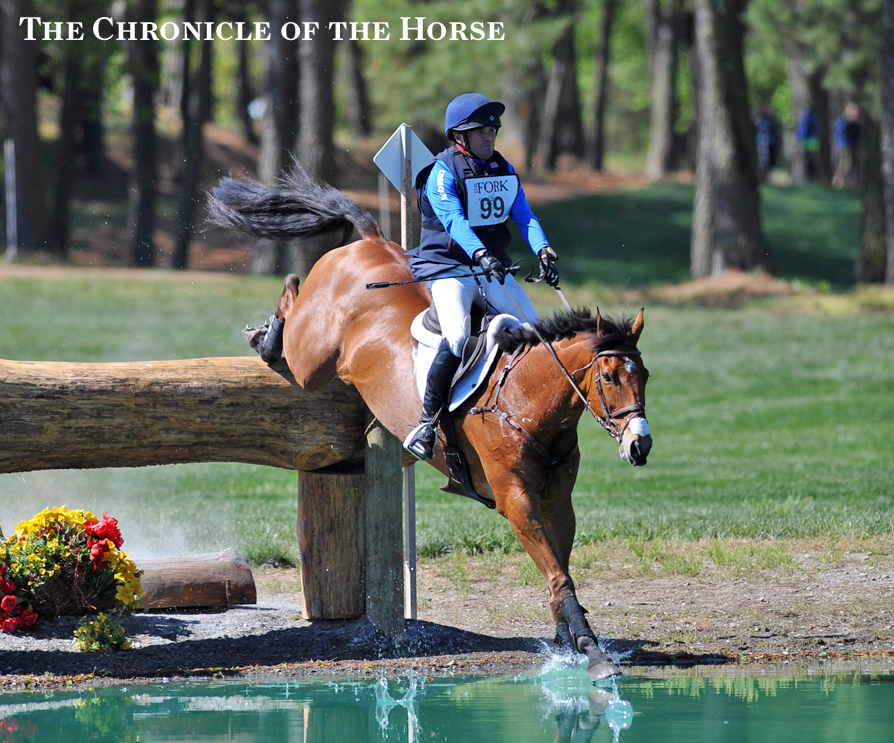
Fernhill Fugitive into the water at the Carolina International CIC*** with Phillip Dutton. Photo by Lindsay Berreth
It’s a bit of a nerve wracking time [gearing up for Rolex], because certainly you’ve still got to keep up your fitness work and everything, but you know you don’t want to hurt them as well—it’s just trying to make sure the footing is good and doing everything you can so they don’t get injured.
ADVERTISEMENT
They’ve all got a shot at it, so it’s just a case of how they’re progressing and how they’re trying and who does well each weekend. I don’t try to separate them. It’s a bit like having favorite children; you just don’t do that. So it’s just about trying to prepare each one so they can be at their best when we need them to be.
Truth is I’m not even really thinking about Rio too much. It’s a bit pointless; I mean it’s out of my control. I’ve got to do well at Kentucky and [the Jersey Fresh CCI*** (N.J.)] with the horses that are entered there, and then worry about the next one after that.
None of the horses are going to go to Rio unless they do well in the next few weeks. So that’s my goal—to get them going really well and go the next few weeks. Then once I get through that, I can analyze and see what we need to work on or where we need to go to get a better result in Rio.
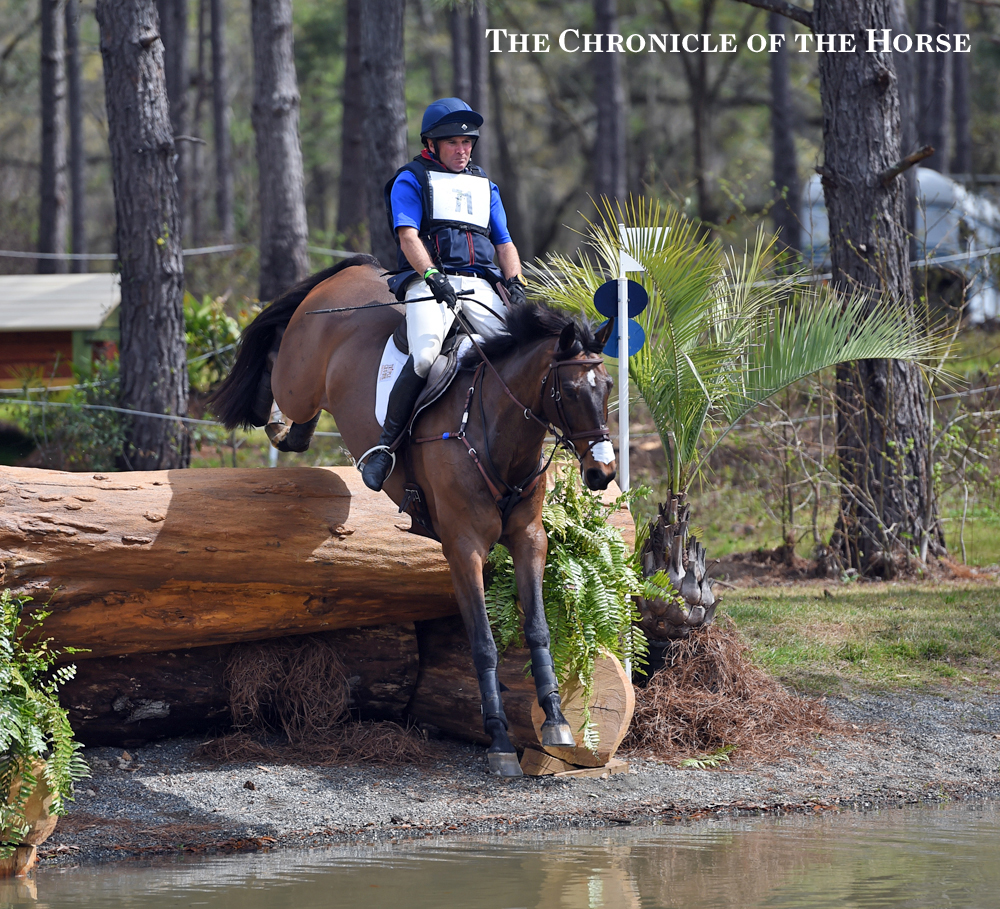
Phillip Dutton and Mr. Candyman competing at the Red Hills CIC***. Photo by Lindsay Berreth
[As we prepare for Rolex], the work gets ramped up a little bit, as does the attention to detail with the dressage work and the jumping. Obviously they’ll be galloping, depending on the horse, every four to five days, and I might get them to one jumper class or show before then, and then I’ll ship to Rolex on the Monday before.
They’ll probably jump once a week before Rolex, and they’ll jump the Sunday before we leave. Mighty Nice and Cubalawn won’t do any cross-country; I think they’re pretty prepared. With Fernhill Fugitive it’s always good to jump him into water just to keep him confident there, so he’ll do probably one cross-country exercise before then.
Dutton may be focused on staying in the moment, but his barn manager, Emma Ford, is all about planning for the future when she thinks about horse care for his potential Olympic horses and leading up to Rolex Kentucky.
Ford: Once they start coming in from their vacation [in early November], you’re already thinking six months ahead: What is going to get them to the competition the happiest and the most focused?
I’m fortunate in that I’ve been working with the ones that are being looked at [for the Olympic team] long enough now that we know what we’ve got to do to hopefully get them there sound.
ADVERTISEMENT
Like specifically with Fernhill Fugitive, he is on a very specific diet. I would say he is the one who changes the most when he comes back to work. He can have regular turnout during the winter—once were in Aiken [S.C., for the winter] he actually lives out 24/7 because he does better with that. He’s not allowed a lot of sugar in his diet because his body doesn’t metabolize sugar very well, and in Aiken there’s no grass basically, so I don’t have to worry about the turnout.

Fernhill Fugitive (Jack to his friends) has some very specific care instructions, like his two-hour turnout limit, that are outlined on his stall board. Ford said she writes “FEI” on the board to signify the horse is being governed by FEI drug rules, and not to put other horses in its stall in case they’re on different medications and could cross-contaminate the FEI horses. Photo courtesy of Emma Ford
But once I get back to Pennsylvania, he can only get two hours of turnout during the day, and his hay has to be wet so that we get as much sugar out of the hay as possible. He’ll go on the Eurocizer, the walker, twice a day, and Phillip will ride him. It’s one of those things where he needs to be moving a lot but then he can’t live outside on the grass.
Then Mighty Nice, or “Happy,” I try to keep him on a night turnout program. Mentally for him he goes better when he has more turnout, but food wise he’s pretty easy maintenance.
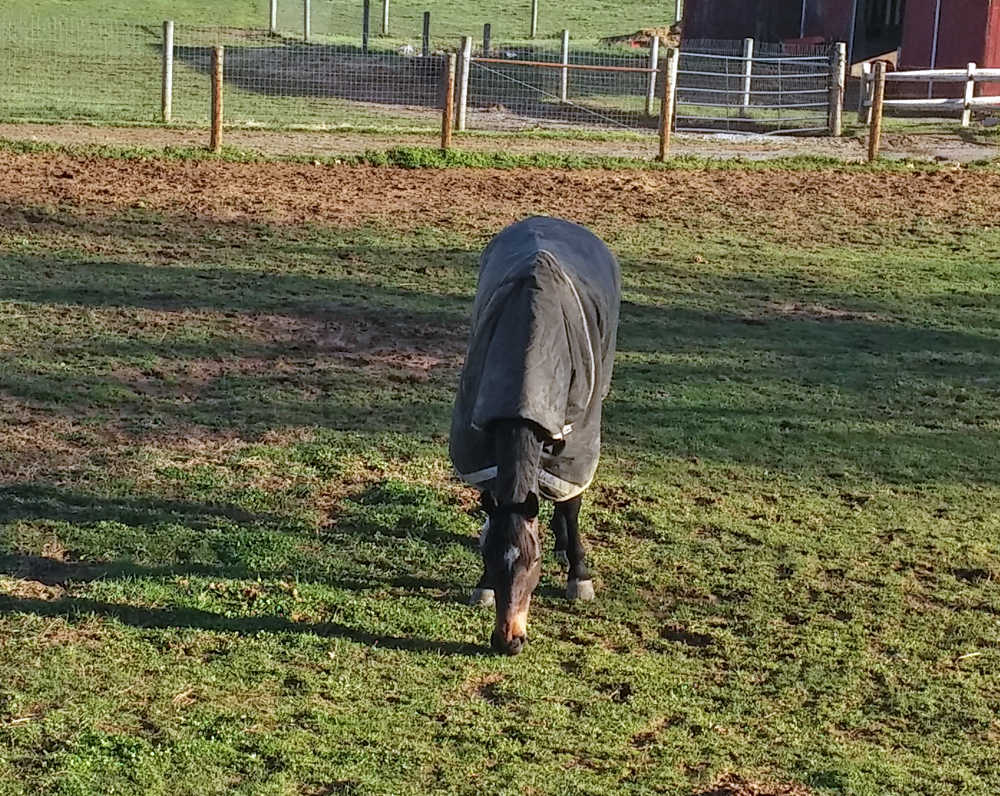
Mighty Nice (Happy) enjoying his turnout time at Dutton’s True Prospect Farm in West Grove, Pa. “I believe in as much turnout as possible for all horses if the situation allows,” Ford said. Photo courtesy of Emma Ford
I don’t want to jinx myself, but Fernhill Cubalawn is a very low maintenance horse. You do have to watch his weight—he can’t go out all day just because he tends to put on the pounds pretty easily.
They’re such individuals. It’s very easy in a barn of 40 to just go through the day and make it happen, but I try very hard to treat them as individuals. Some of them like their hay in a certain spot in the stall, otherwise they won’t eat it, stuff like that. Whatever I think helps them be happy through the day, I try to make that happen for them.
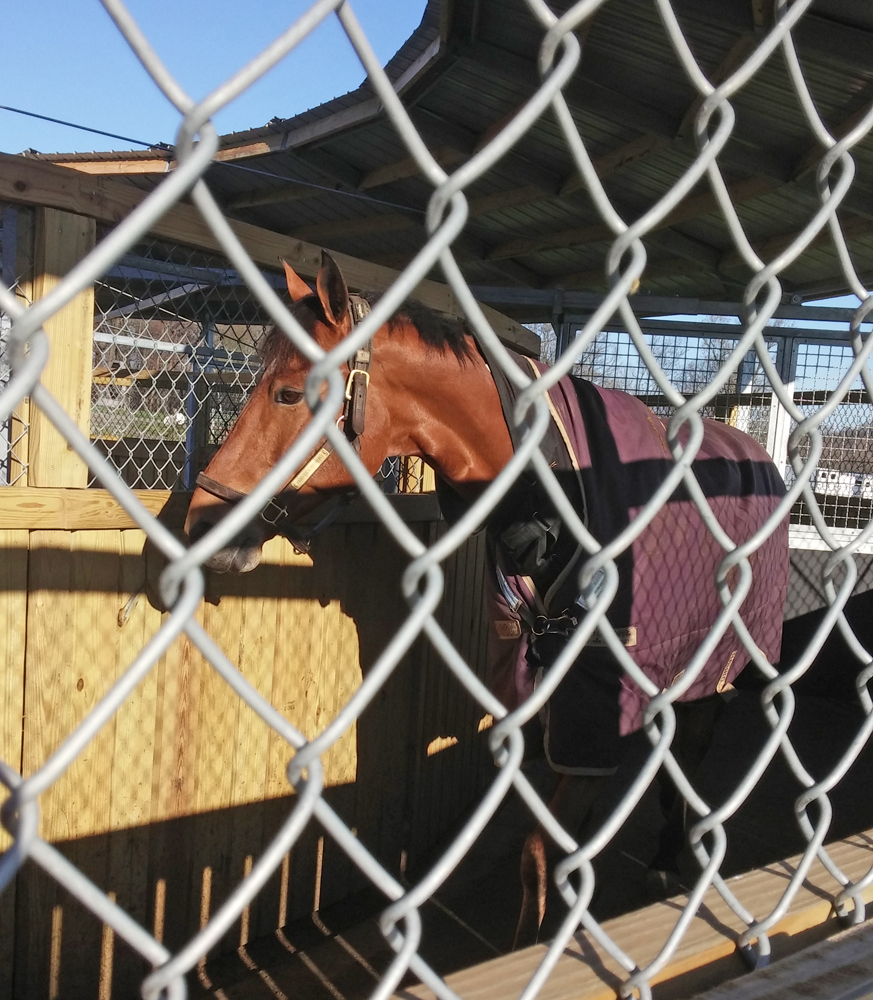
Fernhill Fugitive (Jack) taking a spin on the Eurocizer at Dutton’s farm in Pennsylvania. Ford said every horse in the barn goes on the walker at least once a day, twice a day in the case of Jack. Photo courtesy of Emma Ford







